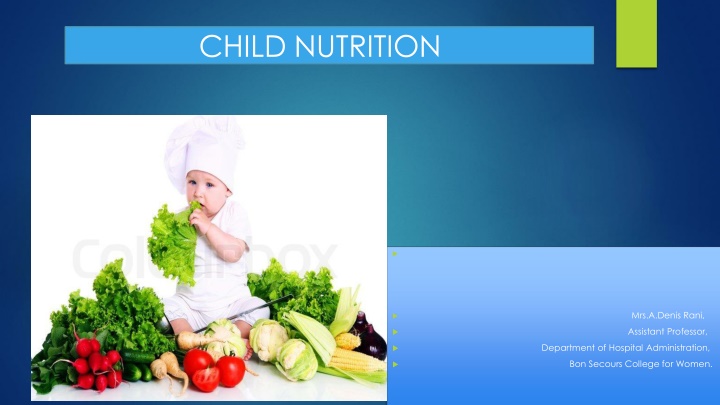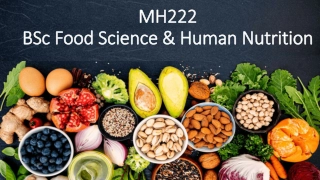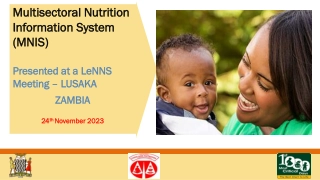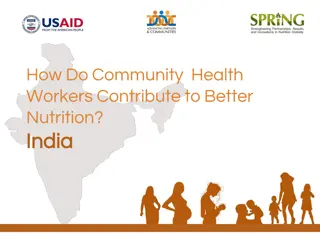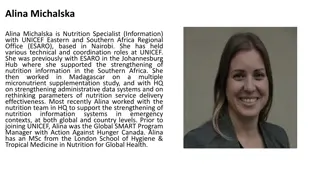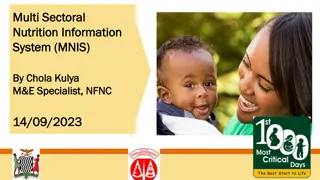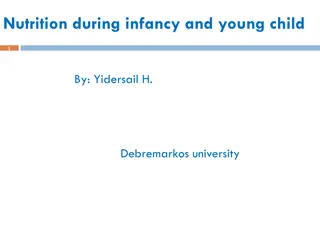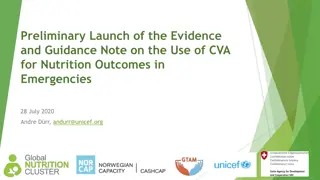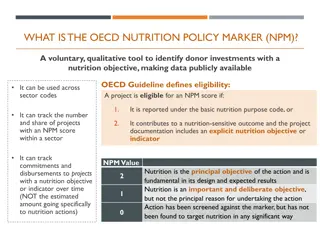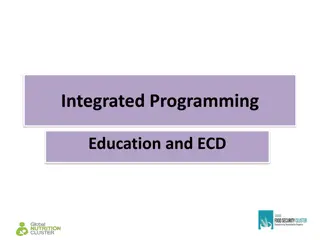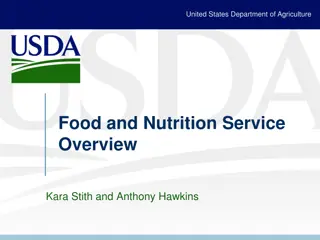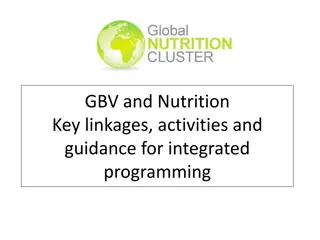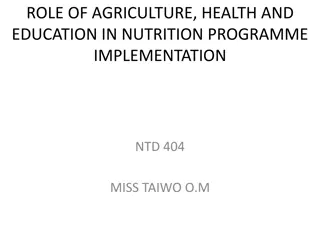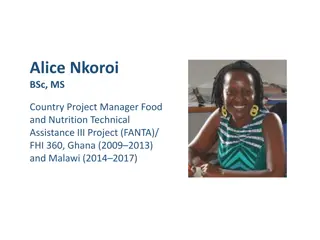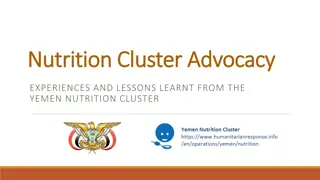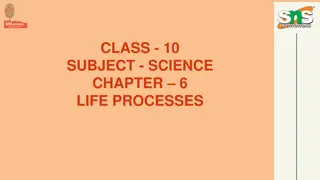Child Nutrition and Development
Mrs. A. Denis Rani, Assistant Professor at Bon Secours College for Women, explains child nutrition focusing on different age groups, nutrient requirements, and the benefits of colostrum. Learn about the definitions of a child, various stages of childhood, and the importance of proper nutrition for healthy growth and development.
Download Presentation

Please find below an Image/Link to download the presentation.
The content on the website is provided AS IS for your information and personal use only. It may not be sold, licensed, or shared on other websites without obtaining consent from the author.If you encounter any issues during the download, it is possible that the publisher has removed the file from their server.
You are allowed to download the files provided on this website for personal or commercial use, subject to the condition that they are used lawfully. All files are the property of their respective owners.
The content on the website is provided AS IS for your information and personal use only. It may not be sold, licensed, or shared on other websites without obtaining consent from the author.
E N D
Presentation Transcript
CHILD NUTRITION Mrs.A.Denis Rani, Assistant Professor, Department of Hospital Administration, Bon Secours College for Women.
Definition of child: Biologically a child (plural: children) is generally a human between the stages of birth and puberty. A person between birth and puberty. A person who has not attained maturity or the age of legalmajority.
Different age of child-hood: 1st day =neonatal 2-30 days = new born 2 month- 2 years = infant 2-6 years = early childhood 6-3 years = childhood/pre-adolescent 13-18 years = adolescents.
Definition of child nutrition: Proper weight for age/height Develop of internal & external organ Overall malnutrition of digestive system Normal physical and neuropsychic development of the child Strong immunity power.
Requirement: Nutrient 0-6 month 7-12 month 1-5 years k. Calories 120 100 1000 1500 Protein 2.3-1.8gm/kg 1.8-1.5gm/kg 17-22 gm Calcium (ca) 0.5-0.6 mg 0.5 0.6mg 0.4-0.5mg Iron (fe) 6mg 10mg 10mg VitA 400mg 300mg 250-300mg Thiamine (B1) 0.3mg 0.3mg 0.6-0.8mg Riboflavin (B2) 0.4mg 0.4mg 0.7-0.8mg Vit C Folic acid 30mg 25mg 30mg 25mg 30-40mg 50-100mg
Colostrum (1stvaccine): A thin white opalescent fluid, the first milk secreted at the termination of pregnancy; it differs from the milk secreted later by containing more lactalbumin andlactoprotine. Health benefit to colostrum: Strengthens the immune system against fungi, bacteria, viruses and candida. Help against depression and enhance mood. Increases your muscle mass and BMR& lymphoid. Reduces allergic reactions like hay fever. Helps tone down allergic responses for people with asthma which otherwise may bring an attack. Balances the blood sugar, which helps control insulin levels in diabetes.
Morebenefit: Supports healthy joint and cartilage function colostrum is a very effective anti- inflammatory compound which can help people with arthritis.it can also help other forms of inflammation from the digestive system which may be linked to arthritis. Promotes healthy intestinal flora in your digestivesystem. Accelerates healing in the case of injury or trauma, as well as helping in recovery from cancer treatments. It does that by turning white blood cells into functionally active T cells in patients, thus aiding in recuperation, healing and strengthening of the immunesystem. Improves endurance and workload capacity. Allows for greater aerobic and anaerobic performance, as well as shorter recovery time between training sessions.
What is weaning food: Complementary foods are foods other than breast milk or formula(liquid, semisolids, and solids) introduced to an infant to provide nutrients. Recommendations on the introduction of complementary foods provided to caregivers infants shouldtake into account: The infants developmental stage and nutritional status. Coexisting medical conditions. Social factors. Cultural, ethic, and religious food. Preferences of the family. Financial considerations; and other patient factors discovered through the nutrition assessmentprocess.
From 4 to 6 months of age, the following developmental changes occur the allow the infant to tolerate complementary foods: The infants ability to digest and absorb proteins, fats, and carbohydrates. Other than those in breast milk and formula, increases rapidly. The infants kidneys develop the ability to excrete the waste products from foods witha high renal solute load, such as meat. The infant develops the neuromuscular mechanisms needed for recognizing. Accepting a spoon, masticating, swallowing. Nonliquid foods, and appreciating. Variation in the taste in the taste and Color of foods.
Multimix : Staple food rice-40gm Protein pulse-25gm. Fish-10gm egg Breast feeding Fat-5gm. Vit-/min- 30mg vegetable/ fruits.
Feeding pattern: Self feeding Cup feeding Spoon feeding Breast/ bottle feeding
Importance of gradually introducing each new food: Introduction new foods one at a fine. Introduce single-ingredient foods initially to determine the infant s acceptance to each food (e.g., try plain rice cereal before rice cereal mixed withfruit). Allow at least 7 days between the introduction of each new single- ingredient food. Introduce a small amount (e.g., about 1 to 2 teaspoons) of a new food at first. Observe the infant closely for adverse reactions such as rash, wheezing, or diarrheaafter feeding a new food.
Definition of malnutrition: Malnutrition is the condition that develops when the body does not get the right amountof the vitamins, minerals, and other nutrients it needs to maintain healthy tissues and organ function. Symptoms: Anemia Diarrhea Disorientation Night blindness Irritability, anxiety, and attentiondeficits Goiter (enlarged thyroid gland) Loss of reflexes and lack of muscular coordination. Muscular twitches. Amenorrhea(Cessation of menstrual periods). Scaling and cracking of the lips and month.
Complication of weaning food: Hyposensiti -zation Allergy Elimination of causative food Food intolerance Alternative food Food intoxicati on Digestive problem
Big concern in malnutrition: Marasmus 3 types kwashiorkor Marasmus kwashiorkor
Causes of child nutrition: Malnourished mother. Colostrum rejection. Improper weaning food. Rejection of exclusivebreast-feeding. Low-birth weight (2-2.5kg). Pre-mature child. Un- hygiene environmental. Inadequate dietaryintake. Inadequate maternalcare. Superstition.
Malnutrition is one of the leading cause of MDG (millennium development goal): Age Disease Frequency 1-5 years Diarrhea 3-4 Times 1-5 years Fever 1-3 Times 1-5 years A.R.I 7-9 Times
Fate of malnutriti on: Still- birth Pre mature child Decrease brain develop Low blood circulation Mentally retarded malnutrition Inadequa -tebone health Decrease immunity Anemia
conclusion Nutrition affects growth and development of a person. At least the development of international standards and national legislation. Are essential to protect and promote national food security and public health. Civil society will have to pay more active role. The concept of food security must be recaptured and reframed in public and environment terms.
